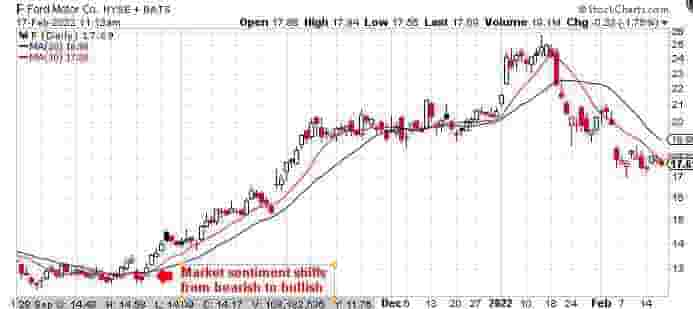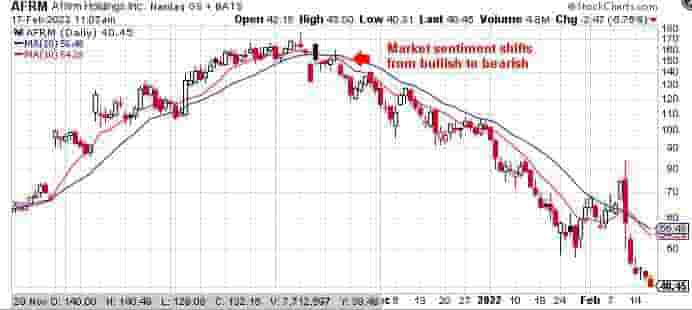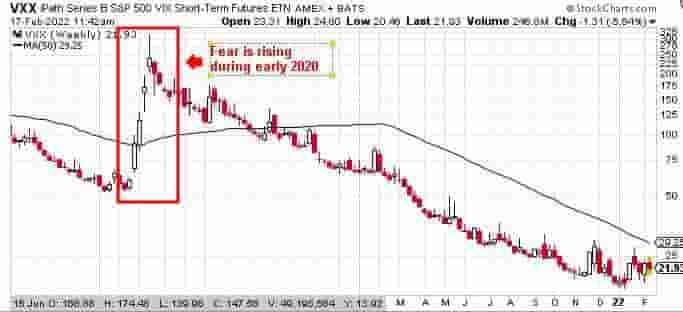What Is Market Sentiment?
Market sentiment, also called “investors sentiment” or “traders sentiment” refers to the overall attitude, consensus or feeling of market participants towards a specific financial instrument.
Market sentiment can be revealed through reading the price action of a price chart with rising prices indicating bullish sentiment and declining prices indicating bearish sentiment.
Technical analysis indicators can also help traders, investors and technical analysts to understand and measure the market sentiment and crowd psychology of a particular financial market.
Traders and investors explain the market sentiment as bullish, bearish, extremely fearful or extremely greedy.
How Market Sentiment Works
Put simply, if the price of the financial instrument is rising, there is generally a positive sentiment towards the market. When the price is falling, there is generally a negative sentiment towards the market.
Market sentiment helps a trader or investor understand the overall view or mood towards a market.
Knowing the crowd consensus towards a particular market can help a trader or investor form their own views.
For example, a contrarian trading strategy may seek to understand the overall sentiment towards a market and then trade the opposite way of the general crowd.
So for a contrarian trading strategy, if there is bullish sentiment in a market, the contrarian trading strategy will seek to find shorting opportunities i.e. go against the general crowd in this example.
How To Measure Market Sentiment
To measure the market sentiment in a financial market:
- Read the price chart of the market: Simply check the price chart of the financial instrument and assess the overall trend. If the trend is bullish, then there is a positive sentiment. If the trend is bearish, then there is a negative sentiment.
- Check the news on a market: Assessing the news around a specific market can also give traders and investors an idea of the sentiment towards a market. e.g. if a news announcement states that a company is fraudulent, that is obviously negative sentiment.
- Check specific financial markets: Specific financial markets like the VIXX can be a great gauge of the overall fear or calm in the markets.
- Use technical analysis indicators: Market sentiment technical indicators can help traders, investors and technical analysts understand the overall sentiment of a market. Example technical indicators include moving averages, the bullish percentage indicator, the 52 week high vs low index, the fear and greed index etc.
- Use technical analysis chart patterns: Chart patterns that form on price charts can help indicate the overall market sentiment. Examples include head and shoulders, cup and handle, pennants and wedges.
- Use sentiment analysis tools: Twitter scanners and message bots scanners can scrape commentary, messages and comments about a particular market and provide an idea of what the overall sentiment is of a market based on commentary from the public about the market.
Market Sentiment Examples
Below are various examples of market sentiment in different financial markets from bullish, bearish, fear and negative sentiment examples.
Bullish Market Sentiment Example

In the price chart above of the Ford stock, market sentiment shifted from bearish to bullish (as annotated on the chart).
Once the 10-day moving averages crossed over the 20-day moving average, it signaled a change in the market sentiment towards Ford stock from one of negativity and bearishness to one of optimism and bullishness.
Bearish Market Sentiment Example

In the price chart above of the AFRM stock, using the moving averages indicator helps a trader or investor to see that the sentiment changed from a bullish sentiment to a bearish sentiment.
As the 10 day moving averages crossed below the 20 day moving average, it signaled a bearish sentiment in the stock which stayed in place for many months.
Using moving averages can help measure these sentiment changes and shifts in a market as evident from the price chart above.
Fear Market Sentiment Example

The VIX index is a measurement of fear and calm in the market and can be an excellent gauge of overall market sentiment.
In the above price chart of the VIX, the price within the red square box rose rapidly in early 2020 signaling massive fear and negativity from traders and investors.
This is a signal of negative and bearish market sentiment. As the VIX rises in price, it is seen as a more risky environment for trading and investing and market participants will look to take risk out of the market.
Limitations Of Market Sentiment
There are a number of limitations of market sentiment including:
- It indicates the current sentiment in the market only: Reading market sentiment can only be done in real-time or when looking back at historical price data but it doesn’t help a trader to understand what the future sentiment might be.
- Market sentiment can remain the same for many years: The sentiment in a market can remain the same for many years. This can be problematic for contrarian-style traders.
- Market sentiment isn’t always accurate for trading signals: Understanding the market sentiment within a market may not always be obvious making it difficult to find trading opportunities based on the sentiment of a financial market.
These are the main limitations of using market sentiment in technical analysis.
Frequently Asked Questions
Below are frequently asked questions about market sentiment.
Which Markets Does Market Sentiment Apply To?
Market sentiment can be measured and applied in any financial market from stocks, commodities, bonds, futures, options, forex, cryptocurrencies etc.
Once human beings can trade or invest in it, there can be market sentiment.
Can Technical Analysis Measure Market Sentiment?
Yes, technical analysis can be used to measure market sentiment within a financial market through the use of reading technical analysis indicators, price charts and specific indexes like the VIX index.
What Does Market Sentiment Tell A Trader Or Investor?
Market sentiment can tell a trader or investor above the overall consensus or mood about a particular financial market by the market participants or the crowd.
